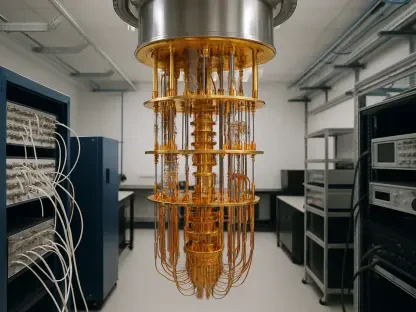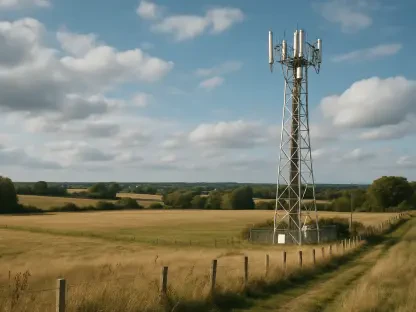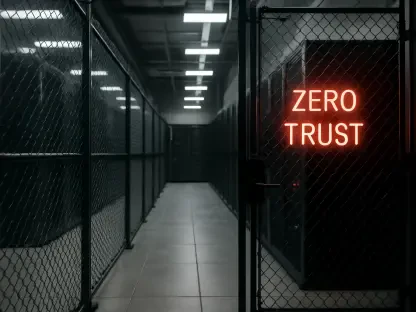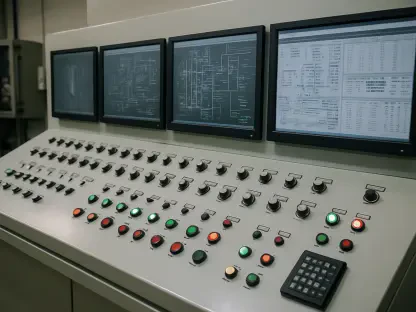Northeast Pennsylvania stands on the brink of a technological transformation as data centers, driven by the insatiable demands of artificial intelligence and cloud computing, emerge as a dominant force in the region, reshaping the economic landscape. These sprawling facilities, designed to store and process massive volumes of digital data, are rapidly taking root in areas like Lackawanna and Luzerne counties, where at least nine projects are currently in development. The surge promises to redefine the area, but it also raises critical questions about sustainability and community impact. On August 11, a significant state Senate hearing at Valley View High School in Archbald convened over 200 residents and policymakers to unpack this complex issue. Hosted by Senators Rosemary Brown and Dave Argall, the event featured testimony from 19 expert panelists across various sectors, aiming to inform rather than persuade. The discussion spanned economic potential, infrastructural challenges, environmental concerns, and local effects, revealing a nuanced balance of opportunity and risk. This exploration delves into the multifaceted consequences of data center growth in the region, drawing from the diverse perspectives shared during the hearing to provide a comprehensive look at what lies ahead for Northeast Pennsylvania as it navigates this digital frontier.
Economic Promises on the Horizon
The economic potential of data centers in Northeast Pennsylvania is nothing short of transformative, with industry giants positioning the region as a hub for technological investment. Amazon Web Services, for example, has committed to a staggering $20 billion investment across the state, with a flagship project in Salem Township, Luzerne County, expected to generate at least 1,250 high-skilled jobs. These positions, often in fields like IT and engineering, offer competitive salaries that could help retain local talent and attract new professionals to the area. Beyond the direct employment figures, the broader economic impact is equally compelling, as these facilities are anticipated to stimulate growth in ancillary sectors. Construction firms, equipment suppliers, and service providers stand to benefit from the influx of projects, creating a ripple effect that could revitalize communities long seeking a new industrial identity. Economic development advocates at the hearing framed this moment as a pivotal opportunity, suggesting that data centers could anchor the region’s prosperity for decades if managed strategically with supportive policies and streamlined permitting processes.
Equally significant is the fiscal boost that data centers could provide to local and state coffers, offering a lifeline to public services and infrastructure funding. Experts testifying at the Archbald hearing estimated that a single large-scale data center could contribute approximately $32 million annually to the local economy while generating around $9 million in state and local tax revenue. This influx of funds could support schools, roads, and community programs, addressing long-standing budget constraints in a region historically tied to declining industries like coal. Moreover, the comparison drawn by economic leaders to a “fourth industrial revolution” underscores the scale of this shift, placing data centers alongside past economic drivers such as iron and warehousing in shaping the area’s future. However, realizing these benefits hinges on careful planning to ensure that growth translates into equitable gains for residents, rather than concentrating wealth among a few corporate entities. The testimony highlighted a pressing need for workforce training programs to prepare locals for these high-demand roles, ensuring that the economic windfall strengthens the community at its core.
Infrastructure Under Pressure
The meteoric rise of data centers in Northeast Pennsylvania brings with it an unprecedented strain on the region’s infrastructure, particularly in terms of energy demands that threaten to outpace current capacities. Representatives from PPL Electric Utilities revealed during the Senate hearing that the energy load from data centers could double their system peak within the next five to six years, a projection that necessitates urgent and extensive upgrades to power grids and transmission lines. Such rapid escalation in demand poses logistical challenges, requiring substantial capital investments to prevent blackouts or service disruptions. While the initial wave of data center energy use might lower transmission costs for residential customers by as much as 10%, utility experts cautioned that subsequent increases would yield diminishing benefits, potentially burdening ratepayers if not carefully managed. The scale of this challenge calls for innovative solutions and robust policy frameworks to balance the needs of industry with those of everyday consumers, ensuring that infrastructure keeps pace with technological ambition.
Water resources face a similarly daunting test as data centers, especially those using water-cooled systems, place extraordinary demands on local supplies. Testimony from Pennsylvania American Water highlighted that a single facility could require up to 3 million gallons per day during peak summer months, a figure that drops significantly in winter but still poses design and operational hurdles. This fluctuating need complicates water management, particularly in a region not historically equipped for such intensive usage. Utility providers emphasized their ongoing investments, totaling hundreds of millions annually, to bolster systems, yet they urged policymakers to implement better forecasting tools and cost-sharing mechanisms. Without proactive measures, the risk of overextending water infrastructure looms large, potentially affecting agriculture, households, and other industries reliant on the same resources. The hearing underscored that sustainable growth of data centers depends on collaborative planning between utilities, developers, and regulators to safeguard essential services.
Environmental Considerations and Solutions
Environmental implications of data center expansion in Northeast Pennsylvania emerged as a critical concern during the Senate hearing, with experts warning of the potential for resource depletion and ecological harm if growth proceeds unchecked. The immense water consumption of these facilities, often supporting cooling systems, places significant stress on local supplies, a problem already evident in other states like Georgia and Texas where data center demands have triggered urgent policy responses. Beyond water, the energy-intensive nature of data centers raises questions about carbon emissions, especially if power is sourced from non-renewable options. Regulatory voices at the hearing, including those from the Susquehanna River Basin Commission, stressed the importance of integrating environmental sustainability into site selection and operational design from the outset. Without such foresight, the region risks long-term damage to its natural resources, which could undermine both community health and economic stability, highlighting the need for stringent oversight and planning.
On a more hopeful note, technological advancements and corporate commitments offer pathways to mitigate these environmental challenges, suggesting that data centers can evolve into more sustainable operations. Industry leaders like Amazon Web Services pointed to innovations such as quieter fans and liquid cooling systems that reduce noise pollution and water usage, alongside pledges to achieve carbon-free energy usage. Proposals to harness nuclear power, particularly through proximity to existing plants like Talen Energy’s facility near Salem Township, were discussed as a long-term solution, though such technologies remain in developmental stages. These efforts reflect a growing recognition within the industry that environmental responsibility is not just ethical but also essential for public acceptance and regulatory approval. The testimony at Archbald emphasized that pairing innovation with policy support could position Northeast Pennsylvania as a leader in green data center practices, provided that commitments translate into actionable outcomes.
Community Dynamics and Local Voices
The arrival of data centers in Northeast Pennsylvania stirs a mix of anticipation and apprehension among local communities, as the promise of economic growth collides with concerns over quality of life and land use. Projects like the $2.1 billion Wildcat Ridge AI Data Center Campus in Archbald, spanning millions of square feet, exemplify the scale of transformation at play, often repurposing land previously zoned for residential or smaller commercial purposes. Residents and local officials expressed unease about the potential for such developments to alter the character of neighborhoods, increase traffic, and strain public services. These concerns are not merely speculative; they reflect a broader tension between the allure of job creation and the tangible disruptions that accompany rapid industrialization. The Senate hearing provided a platform for these voices, revealing a deep-seated desire for development that respects the region’s heritage and prioritizes the well-being of those who call it home over unchecked corporate expansion.
Equally compelling was the call for local control over the pace and nature of data center projects, a theme that resonated strongly among township supervisors and community advocates during the discussion in Archbald. Many argued against fast-tracked approval processes that could sidestep resident input, asserting that speed should not come at the expense of rights or thoughtful planning. This perspective underscores a critical need to balance economic imperatives with democratic principles, ensuring that communities have a meaningful say in decisions that shape their future. While not all proposed data centers are likely to come to fruition, even a fraction of them could significantly impact local dynamics, making transparent dialogue and robust zoning regulations essential. The hearing illuminated the importance of crafting policies that protect municipal autonomy, fostering a development model where economic benefits are shared without sacrificing the integrity of the communities hosting these technological giants.
Navigating the Future of Digital Growth
Reflecting on the insights shared at Valley View High School, it became evident that data centers had already begun to redefine Northeast Pennsylvania, presenting a dual narrative of unprecedented opportunity and formidable challenges. The economic injections, infrastructural demands, environmental considerations, and community tensions discussed during the session painted a region at a critical juncture, compelled to adapt to a digitally driven era. Senators Brown and Argall, in facilitating this dialogue, helped lay the groundwork for informed decision-making that could shape the trajectory of local growth. As the dust settled on the testimonies, the path forward pointed to actionable strategies—collaborative infrastructure planning, investment in sustainable technologies, and stronger community engagement—as vital steps to harness the benefits of data centers. Policymakers and stakeholders must now prioritize legislative frameworks that address resource forecasting and cost-sharing, while ensuring that environmental safeguards and local input remain central to development. This pivotal moment offers Northeast Pennsylvania a chance to model balanced progress, turning the challenges of today into the foundations of a resilient and prosperous tomorrow.









